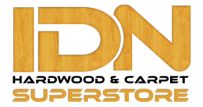Proper care and maintenance are essential to preserving the beauty and durability of engineered hardwood floors. Unlike solid wood, engineered hardwood features a layered construction that enhances stability while maintaining the aesthetic appeal of natural wood. By following best practices for cleaning, protection, and moisture control, homeowners can extend the lifespan of their flooring and keep it looking pristine.
Cleaning Techniques for Engineered Hardwood Floors
Keeping engineered hardwood floors clean requires regular attention to prevent dirt and debris from causing scratches. Daily sweeping or dry mopping removes dust and prevents buildup, while a microfiber mop with a damp cloth helps maintain a polished look. When using cleaning solutions, it’s important to choose products specifically designed for engineered hardwood to avoid damaging the protective finish.
Avoid excessive water or steam cleaning, as moisture can seep into the wood layers and cause warping. Spills should be wiped up immediately with a soft, dry cloth to prevent staining or swelling. Using furniture pads and area rugs in high-traffic areas can further protect the surface from wear and tear.
Protecting Against Scratches and Damage
Although engineered hardwood is more resistant to environmental changes than solid wood, it is still susceptible to scratches and dents. Placing felt pads under furniture legs can prevent scratches caused by movement while keeping pet nails trimmed reduces the risk of surface damage. Using entryway mats to trap dirt and debris from shoes can also help minimize abrasion.
High heels and heavy furniture can create dents in engineered hardwood floors, so it’s recommended to use protective mats in frequently used areas. Rearranging furniture periodically ensures even wear across the floor, preventing certain areas from deteriorating faster than others.
Controlling Humidity and Moisture Levels
Engineered hardwood performs best in stable indoor conditions with controlled humidity levels. Fluctuations in moisture can lead to expansion or contraction, causing gaps or warping. Maintaining indoor humidity between 30% and 50% helps preserve the floor’s structural integrity.
Using a dehumidifier in humid climates or a humidifier in dry conditions can regulate moisture levels and prevent the wood from drying out or swelling. Additionally, keeping an eye on potential water leaks from appliances or plumbing can help avoid long-term damage to the flooring.
By implementing these expert care strategies, homeowners can protect their investment and enjoy the natural beauty of engineered hardwood for years to come. Consistent cleaning, scratch prevention, and moisture control are key factors in maintaining the integrity of these elegant and durable floors.
Read more:
The Best Engineered Hardwood for Pets and Kids: Scratch-Resistant & Durable Options
Engineered Hardwood vs. Luxury Vinyl Plank: Which Flooring Option is Right for You?
